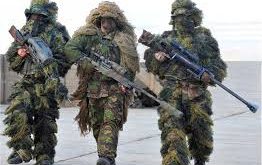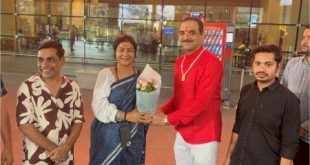From an evolutionary perspective, every life form is in a constant, mundane battle to survive and finally perish. So, what is the meaning of this existence? This is a question that humans have still not been able to answer. Religion has offered solace and meaning beyond death. However, people are still struggling to fight the everyday, mundane battle to transform their current lives and selves. The answer for most people lies in a hero’s tale, which they can emulate to transform their own lives.
The life of Ram is such a tale. Ram, a mighty prince, is the son of King Dashrath of Ayodhya. He is an incarnation of Lord Vishnu, one of the three most important and powerful gods among Hindus. The journey of Ram’s vanvasa culminating in Dussehra is, in essence, a story of heroic transformation.
Dashrath, the king of Ayodhya, banished his son, Ram, into the forest to perform ‘vanvasa’. Henceforth, Ram, accompanied by his wife Sita and his younger brother Lakshman, embarks on a journey that will lead to a metamorphic transformation. Here, they encounter and overcome multiple challenges and defeat demons and temptations. Sita gets abducted by King Ravan. Ram and Lakshman then set out to bring her back and destroy Ravan. This journey and the actions of Ram throughout the rest of his life established him as the’maryada purushottam’ and the ‘epitome of dharma’.
The Psychology of a Heroic Transformation
There are three stages of a heroic transformation (Allison, Goethals, Marrinan, Parker, Spyrou, & Stein, 2019). The first stage is ‘departure’ (separation). Ram leaves the comfort and safety of his father’s empire and embarks on his ‘vanvas’. Thus, he gets separated from his father, mother, and siblings. Here he is faced with the dilemma of whether to defy his father’s order or not and has everyone’s support, even Bharat (who will replace Ram). He simply states, “I gladly obey my father’s command.” He then enters the second stage of ‘initiation’ and faces suffering and challenges; the greatest one is when his wife, Sita, is abducted by Ravan. He fights an epic battle to defeat Ravan and save Sita.
The final stage of ‘return’ is completed when he returns to Ayodhya and takes the throne. This return leads to a societal transformation of the kingdom of Ram to a ‘Ram-rajya’, which is an ideal time period where everyone performs their dharma and “fathers never have to light the funeral pyres for their sons”.
The hero leadership dynamic (Allison & Goethals, 2016) states that heroic transformation tales fulfill cognitive and emotional needs. It gives people wisdom about life and about right vs. wrong deeds and actions. It provides much-sought-out meaning in life, the purpose of existence, and why certain actions are better than others. It provides hope that current struggles will lead to a better future. The victory in the story provides inspiration that evil will be defeated by the righteous. This ultimately helps in the personal growth of individuals since they strive towards better thoughts, choices, and actions. Heroic transformation tales help people gain a sense of agency and control over their actions, repair psychological wounds, and foster mental well-being (Kinsella, Ritchie, & Igou, 2015).
The psychology and power of social nudges
Nudge is an attempt to steer people to a choice that improves health, wealth, and welfare (Kosters & Van der Heijden, 2015). A nudge is a gentle push towards something. It aims to help with the decisions we make in everyday life. A nudge has the power to remain in practice even once it is stopped after a while (Rookhuijzen, De Vet, & Adriaanse, 2021), and the Dussehra offers many nudges that help people make better choices.
The first nudge in the story of Ramayana and Dussehra is to show how the good always wins over the bad. No matter how difficult situations or circumstances may be at times, the ultimate win is for those who have the right and good intentions. The second nudge is that of long-term gain vs. short-term pain. The festival of Dussehra nudges people to undertake a transformative journey to become the best version of themselves. The celebration and retelling of the story help people undertake physical challenges and, therefore, become stronger physically. Behaviorally, it nudges people to emulate Ram and acquire Ram-like heroic qualities of strength, resilience, and courage.
The idea of transformation is hinged on the premise that this pain and effort will lead to a better life. Thus, it nudges people to focus on future-oriented decisions. The third nudge is to always take action that helps and benefits others, rather than being selfish. The selfishness of Kaikeyi leads to the banishment of Ram and his heroic transformation. The better choice is to help others by making sacrifices for others’ good by letting go of one’s ego and becoming selfless and one with society.
The fourth nudge is that of karma: Dushratha’s karma (non-intentional and accidental killing of a man) catches up to him, and he has to face the consequences (living separated from his son). The fifth nudge can be found in the word ‘Dussehra’ itself. It is derived from the Sanskrit words ‘Dasha’ meaning 10, and ‘Hara’ meaning defeat (Britannica, 2023). The festival goes on for around 10 days, starting on the 10th of the month during the full moon. Each day signifies the defeat of a vice, leading up to 10 vices that people need to defeat in their own lives.
Conclusion
The festival of Dussehra has profound psychological effects. Ram’s trials and tribulations nudge people towards better decisions in life when faced with difficult choices and dilemmas between competing duties. People can not only find solace, hope, and joy in the victory of good over evil but also emulate the choices of Ram to attain Ram-like qualities and strive towards becoming the ideal human being. It gives hope and fosters the mental health of people.
References
Allison, S. T., Goethals, G. R., Marrinan, A. R., Parker, O. M., Spyrou, S. P., & Stein, M. (2019). The metamorphosis of the hero: Principles, processes, and purpose. Frontiers in Psychology, 10, 606.
Allison, S. T., & Goethals, G. R. (2016). Hero worship: The elevation of the human spirit. Journal for the Theory of Social Behaviour, 46(2), 187-210..
Kinsella, E. L., Ritchie, T. D., & Igou, E. R. (2015). Lay perspectives on the social and psychological functions of heroes. Frontiers in psychology, 6, 130.
Kosters, M., & Van der Heijden, J. (2015). From mechanism to virtue: Evaluating Nudge theory. Evaluation, 21(3), 276-291.
Van Rookhuijzen, M., De Vet, E., & Adriaanse, M. A. (2021). The effects of nudges: One-shot only? exploring the temporal spillover effects of a default nudge. Frontiers in Psychology, 12.
Authored by:
Dr. Abhishek Sahai, Faculty of Psychology, FLAME University
Dr. Shruti Goyal, Faculty of Psychology, FLAME University
Ankita Anand, Undergraduate Student, FLAME University
 Newspatrolling.com News cum Content Syndication Portal Online
Newspatrolling.com News cum Content Syndication Portal Online






